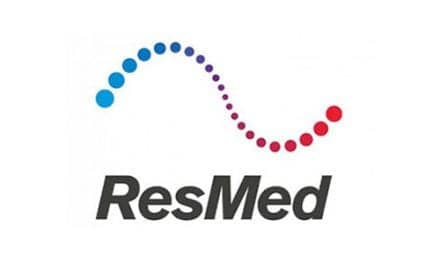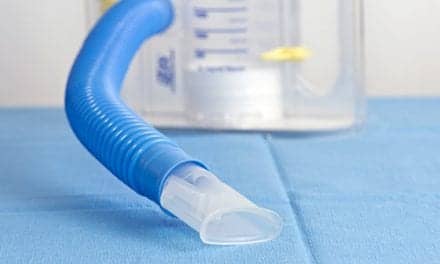
Pulse oximetry has firmly established itself as the backbone of patient monitoring, yet there is still room for growth in terms of profits and capabilities. As market forecasts predict expansion for this multimillion-dollar industry in the next 5 years, this month’s Market Analysis asked executives from three pulse oximetry manufacturers to weigh in on the factors behind this growth and the technology that will lead it.
Our respondents include Donna Ford-Serbu, vice president of global marketing, Covidien, Boulder, Colo; Cosimo Cariolo, senior director of marketing, SDI Diagnostics Inc, Easton, Mass; and Paul Jansen, executive vice president of marketing, Masimo Corp, Irvine, Calif.
RT: A recent report by Global Industry Analysts projects that the global market for pulse oximeters will reach $575 million by 2015. Do you agree with this projected growth figure? What factors do you think are driving this growth?
Ford-Serbu: The global market for pulse oximeters seems to be favorably poised, driven in large part by recent product innovations and new technologies. In the United States, a primary catalyst for growth is the aging population, coupled with rising patient acuity, which increases the need for monitoring in the immediate and subacute settings. Another critical factor is increasing pressure on hospitals to improve health care efficiencies through technology that enhances reliability and improved detection algorithms.
Cariolo: We agree that given the factors in today’s markets, pulse oximetry growth may reach $575 million by 2015 if one considers all facets of this market to include all patient stations in the hospital markets, all sleep analysis workstations, physician office and clinical settings, and general sports analysis. The fastest growth may occur outside the patient bed environment. A key reason for growth is the advent of lower cost optics, resulting in accessibility to these products by a greater percentage of the population.
Jansen: I think this particular report is significantly underestimating the market. Masimo’s been saying publicly that we think there already is a global pulse oximetry market of more than a billion dollars today. And we believe that it is significantly growing. But what’s driving the overall growth?
First, pulse oximetry is the most commonly measured vital sign monitoring variable today and its use is expanding. Most hospital patients are not continuously monitored with any modality, so a lot of what is driving the industry is the expansion of monitoring into the previously unmonitored space. The second factor is the increasing use of single patient-use disposable sensors versus reusable sensors. Hospitals today prefer the disposable sensors because they reduce the risk of cross-contamination and offer a better fit to improve performance. Lastly, a third, [albeit] small, factor is the natural growth over time in the hospital census.
Aside from the core driving factors, we also see [a number of] future drivers. We are just starting to see the use of pulse oximetry expanded to other clinical applications and purposes. A good example of this is congenital heart disease detection. There are currently initiatives within the federal government that could make pulse oximetry screening a standard of care. Outside the United States, as health care continues to develop rapidly in the rest of the world, so too is the global adoption of what we consider to be standard monitoring practices [here in the United States], like pulse oximetry.
RT: What markets or health care settings exhibit the best opportunity for growth in pulse oximeter sales?

Cosimo Cariolo

Paul Jansen
Ford-Serbu: In the United States, the demand for pulse oximetry seems to be rising in the alternate care market space, where services are primarily driven by treatment plans that may reduce hospital admissions. Additionally, as the patient population ages and as patients are moved to lower acuity areas of the hospital, we feel that the general care floor area is an opportunity for growth. Also, where in past years the market for medical devices had been limited to developed countries, new medical markets are emerging in countries such as India as physicians and administrators around the world realize the return on investment provided by pulse oximetry—a cost-effective technology that provides physicians with greater insight into their patients’ well-being.
Cariolo: The other-than-hospital market exhibits the best growth opportunities. Currently, the hospital market is somewhat mature for measurement of Spo2. The needs are being filled at a somewhat stable level, and the fingertip pulse oximeter sales level is being offset by a less expensive product with the same features and accuracy of units sold 3 to 5 years ago at more than twice the current price, resulting in narrower net gains. Physician offices and general clinical settings offer a great opportunity because of a greater degree of affordability and a higher level of clinical knowledge in pulmonary care, especially COPD.
Jansen: Inside the hospital, pulse oximetry monitoring on the general care floor—where 80% of hospitalized patients are cared for—is the biggest opportunity. But then outside of the hospital, we see increasing growth in another key area that we call alternate care, made up of long-term care, subacute care, and skilled nursing facilities; ambulatory surgery centers; and physician offices where pulse oximetry monitoring was not routinely used, but is now becoming more relevant to improve the care and safety of patients in these settings.
RT: Given the rising costs of health care, can new pulse oximetry products continue to adopt new advanced technologies while becoming less expensive? How are manufacturers helping health care providers not break their capital budgets?
Cariolo: Technology will allow expanded capabilities, especially in the areas of diagnosis of obstructive sleep apnea, but much of this will be linked to software and expanded instrument capabilities, not necessarily in Spo2 measurement only. Manufacturers are realizing greater manufacture savings due to the increasingly lower cost of optics. These costs can account for and offset other costs of instrumentation.
Jansen: We believe that pulse oximetry innovation is key to fueling its long-term adoption and improving the quality of care for patients. Our goal, and what we have heard clinicians and care providers say they want, is for solutions that are “more cost-effective.” They are willing to make the investment; they just need to understand both the clinical and financial return on that investment.
As part of our mission, we want to quantify for hospitals how implementing our technologies will help them reduce or avoid costs. Because the reality is if you implement superior technology, you will incur clinical performance gains that are often accompanied by cost reductions.
The other thing that we do to help hospitals—given tight capital budgets—is that we offer very flexible acquisition programs. Hospitals can receive new technology that is significantly better than what they are currently using, often without committing a large amount of up-front capital dollars. In these cases, Masimo can often upgrade the hospital’s existing pulse oximeter equipment in exchange for committing to consumable sensor volume and spending that they already budget and allocate today.
RT: Tell us about your company’s most recent pulse oximetry products and why they are innovative for the needs of RTs.
Ford-Serbu: Covidien recently launched the Alarm Management System (AMS) for the Nellcor™ OxiMax™ N-600x™ pulse oximeter. AMS, which includes the OxiMax SPD™ alert and SatSeconds™ alarm management, detects and alerts staff to desaturation patterns indicative of repetitive reductions in airflow, while reducing less clinically significant alarms. This enables RTs and other care staff to quickly identify potentially harmful patterns, even if patients do not cross the Spo2 threshold. We believe this latest product offering will help meet the need among hospitals for a better early warning system for potentially life-threatening respiratory events, especially on the general care floor where there are typically lower nurse-to-patient ratios.
Cariolo: SDI pulse oximeters afford the same degree of accuracy and precision as those costing several times more. The capabilities are equal to or greater than those of our competition, and patient displays offer a high degree of flexibility toward better patient care. SDI FTP Fingertip Pulse Oximeter offers a uniquely designed digital tunnel for Spo2 and HR measurement in pediatric patients.
Jansen: Our focus really is targeted to providing more measurements that make a difference in clinical care; and they all come down to enabling RTs and clinicians to make either earlier or better clinical decisions in their respective care areas.
First, we have a technology platform called Rainbow® Pulse CO-Oximetry™ that measures multiple blood constituents previously requiring invasive procedures. For example, hemoglobin, which is the most common laboratory variable measured today, can now be measured noninvasively and continuously with a Masimo Pulse CO-Oximeter and a special sensor we call the Rainbow sensor.
Next, we introduced Patient SafetyNet, a remote monitoring and clinician notification system that works with pulse oximeters, located at the bedside, to wirelessly notify clinicians on the general floor when their patients are in distress or are clinically deteriorating. Patient SafetyNet offers facilities a complete system that can be easily implemented, is easy to use/operate by fewer technical staff on the general floor, and can easily leverage existing IT infrastructure to maximize a hospital’s current IT investment.
Last, our latest technology is called Rainbow Acoustic Monitoring. Instead of using light to analyze and quantify blood constituents like pulse oximetry and Pulse CO-Oximetry do, it captures and analyzes breath sounds through an innovative acoustic sensor that is placed on the patient’s neck. From these sounds, we can automatically and continuously extract the frequency of breathing to get the acoustic respiration rate (RRa) measurement.
Alison Werner is associate editor for RT. For further information, contact [email protected].









